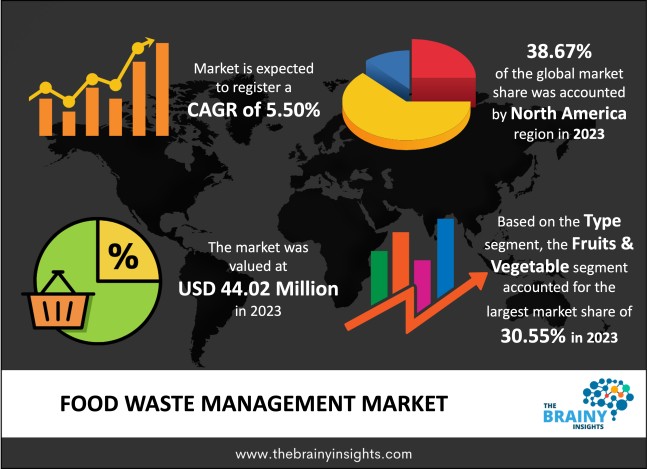Global Food Waste Report 2024: A Critical Analysis in the Context of Sustainable Development Goals
Executive Summary: The Scale of the Crisis
The United Nations Environment Programme’s (UNEP) Food Waste Report 2024 reveals a significant challenge to the achievement of the Sustainable Development Goals (SDGs). In 2022, an estimated 1.05 billion tonnes of food waste were generated globally, representing a profound failure in resource management and a direct contradiction to key SDG targets. This waste, valued at over one trillion U.S. dollars, has severe implications for global hunger, climate change, and ecosystem stability.
- Total food waste generated in 2022: 1.05 billion tonnes.
- Estimated percentage of consumer-available food wasted: 19%.
- Average per capita food waste: 132 kg.
- Average household per capita food waste: 79 kg.
Impact on SDG 2 (Zero Hunger) and SDG 12 (Responsible Consumption and Production)
The report’s findings highlight a stark disconnect between global food systems and the objectives of SDG 2 and SDG 12. While up to 783 million people are affected by hunger, a substantial portion of edible food is discarded, undermining efforts to ensure food security and promote sustainable consumption.
- SDG 2 (Zero Hunger): The immense volume of wasted food coexists with widespread global hunger, indicating a critical inefficiency in food distribution and access that directly impedes the goal of ending hunger.
- SDG 12 (Responsible Consumption and Production): The generation of 1.05 billion tonnes of food waste at the retail, food service, and household levels is in direct opposition to SDG Target 12.3, which aims to halve per capita global food waste by 2030. The data confirms that current consumption patterns are unsustainable.
Environmental Consequences and Links to SDG 13 (Climate Action) and SDG 15 (Life on Land)
The environmental footprint of food waste poses a direct threat to climate stability and terrestrial ecosystems, compromising the targets set forth in SDG 13 and SDG 15.
- SDG 13 (Climate Action): Food waste is responsible for an estimated 8-10 percent of global greenhouse gas emissions. Reducing this waste is a critical strategy for mitigating climate change and achieving the goals of the Paris Agreement.
- SDG 15 (Life on Land): The production of food that is ultimately wasted occupies nearly 30 percent of the world’s agricultural land. This inefficient land use contributes to deforestation, biodiversity loss, and soil degradation, undermining the protection of life on land.
Global and National Waste Statistics
The report provides a detailed breakdown of food waste, revealing that it is a universal issue affecting countries across all income levels. This challenges the misconception that food waste is primarily a problem in high-income nations and is relevant to SDG 10 (Reduced Inequalities).
Household Waste Per Capita by Country Income Group
- High-Income Countries: 81 kg per capita
- Upper-Middle-Income Countries: 88 kg per capita
- Lower-Middle-Income Countries: 86 kg per capita
Total Annual Household Waste in Selected Countries
- China: 108.7 million tonnes
- India: 78.1 million tonnes
- United States: 24.7 million tonnes
- Germany: 6.5 million tonnes
- France: 3.9 million tonnes
- South Africa: 2.8 million tonnes
- Ghana: 2.8 million tonnes
Per Capita Household Waste in Selected Countries
- United States: 73 kg
- India: 55 kg
- Philippines: 26 kg
Analysis of Sustainable Development Goals in the Article
1. Which SDGs are addressed or connected to the issues highlighted in the article?
-
SDG 2: Zero Hunger
- The article directly connects the issue of food waste to global hunger by stating, “As more than one trillion U.S. dollars worth of food is thrown away each year, up to 783 million people are affected by hunger.” This juxtaposition highlights the inefficiency and inequity in the global food system, linking the problem of waste directly to the challenge of ensuring no one goes hungry.
-
SDG 12: Responsible Consumption and Production
- This is the central SDG discussed in the article. The entire text focuses on the scale of food waste, which is a key component of unsustainable consumption and production patterns. The article provides extensive data on food waste generated by households, retail, and food services, directly addressing the core themes of SDG 12.
-
SDG 13: Climate Action
- The article establishes a clear link between food waste and climate change by mentioning that “food waste generates an estimated 8-10 percent of global greenhouse gas emissions.” This identifies food waste as a significant contributor to climate change, making its reduction a crucial climate action strategy.
2. What specific targets under those SDGs can be identified based on the article’s content?
-
Target 2.1: End hunger and ensure access to safe, nutritious and sufficient food
- The article implies a connection to this target by highlighting the paradox of 783 million people suffering from hunger while 1.05 billion tonnes of food are wasted. Reducing food waste could increase the availability of food, thereby contributing to the goal of ending hunger.
-
Target 12.3: By 2030, halve per capita global food waste at the retail and consumer levels and reduce food losses along production and supply chains
- This target is directly and explicitly addressed. The article is based on the UN’s “Food Waste Report 2024” and provides detailed statistics on food waste at the retail, food service, and household (consumer) levels. It quantifies the problem that Target 12.3 aims to solve, mentioning that “19 percent of food available to consumers being wasted across the retail, food services and household levels.”
-
Target 13.2: Integrate climate change measures into national policies, strategies and planning
- By quantifying the climate impact of food waste (“8-10 percent of global greenhouse gas emissions”), the article underscores the importance of including food waste reduction in climate change strategies. This supports the integration of such measures into national planning, as called for by Target 13.2.
3. Are there any indicators mentioned or implied in the article that can be used to measure progress towards the identified targets?
-
Indicator for Target 2.1 (Prevalence of undernourishment)
- The article mentions a key data point related to this: “up to 783 million people are affected by hunger.” This figure is a direct measure of the scale of hunger and can be used to track progress towards eliminating it.
-
Indicators for Target 12.3 (Food waste index)
- The article is rich with data points that serve as indicators for measuring food waste:
- Total food waste: “1.05 billion tonnes of food waste across the retail, food service and household sectors” in 2022.
- Per capita food waste: “The average amount of food waste per capita that year is estimated to be 132 kg.”
- Household per capita food waste: “79 kg was household waste.”
- Percentage of food wasted: “roughly 19 percent of food available to consumers being wasted.”
- Country-level data: The article provides total annual household waste for countries like China (108.7 million tonnes) and India (78.1 million tonnes), and per capita household waste for India (55 kg), the United States (73 kg), and the Philippines (26 kg). These figures are direct indicators for tracking progress on Target 12.3.
- The article is rich with data points that serve as indicators for measuring food waste:
-
Indicator for Target 13.2 (Greenhouse gas emissions)
- The article provides a specific metric: “food waste generates an estimated 8-10 percent of global greenhouse gas emissions.” This percentage can be used as an indicator to monitor the contribution of food waste to total emissions and to measure the climate benefits of waste reduction efforts.
4. Table of SDGs, Targets, and Indicators
| SDGs | Targets | Indicators |
|---|---|---|
| SDG 2: Zero Hunger | 2.1: End hunger and ensure access to safe, nutritious and sufficient food. |
|
| SDG 12: Responsible Consumption and Production | 12.3: By 2030, halve per capita global food waste at the retail and consumer levels. |
|
| SDG 13: Climate Action | 13.2: Integrate climate change measures into national policies, strategies and planning. |
|
Source: statista.com







